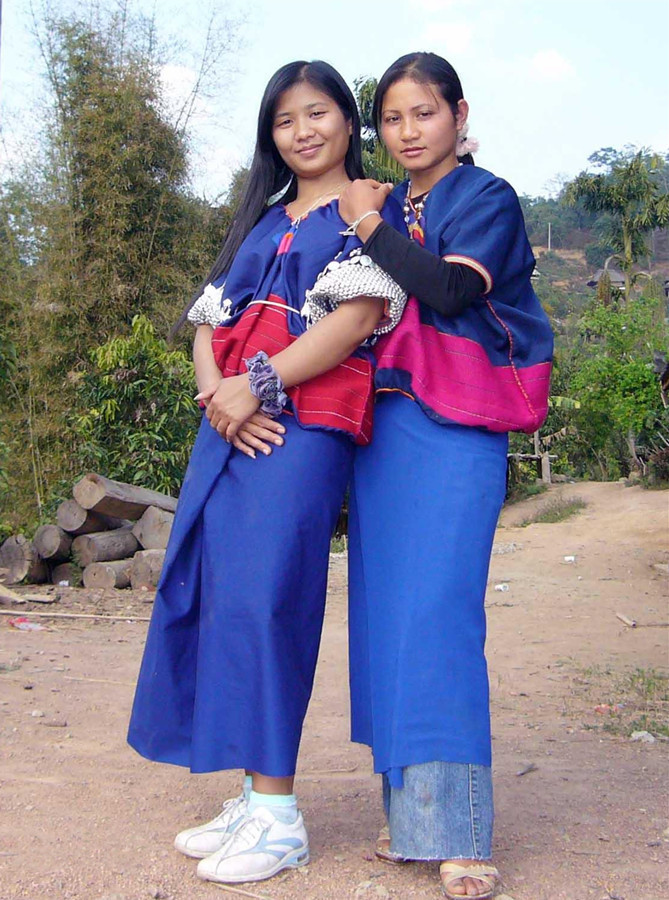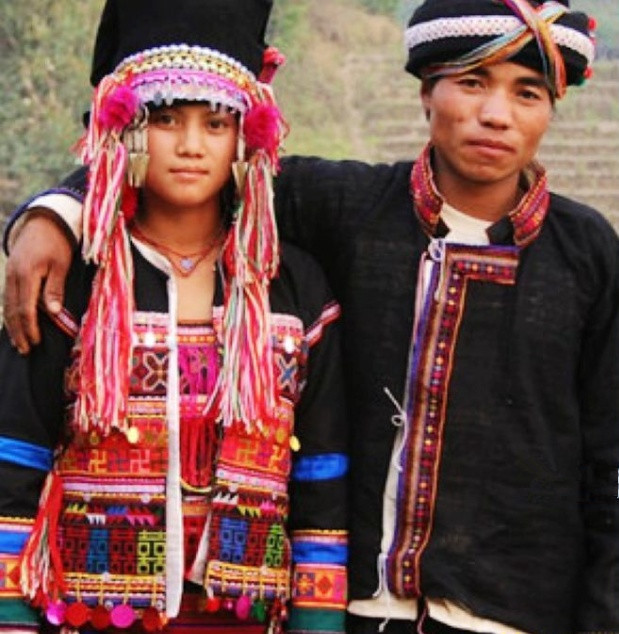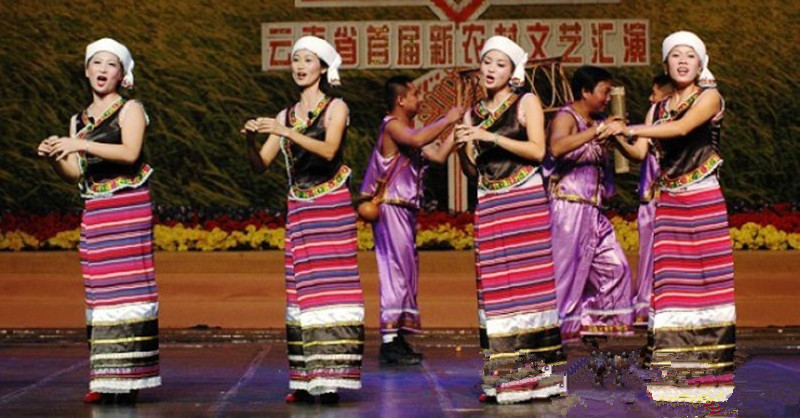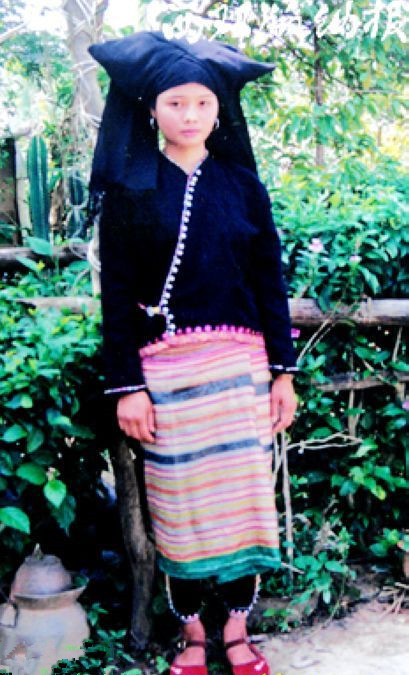
Tribes of Bulang and Hani Ethnic Minorities in XishuangBanna
In Xishuangbanna, several ethnic groups that were previously distinct have been officially classified into larger recognized ethnic groups, mainly the Blang (布朗族) and the Hani (哈尼族) people.
(A) People classified as Blang
- Manmi People (曼咪人)
- History: The Manmi people once referred to themselves as the “Manmi tribe.” After the ethnic classification work in 1958, they were categorized as part of the Blang ethnic group.
- Population and Location: They primarily live in the villages of Xiao Manmi, Da Manmi, Jiangtou, and Manmi Village of the Manmai Village Committee in Jinghong City. There are 219 households with a population of 904 people.
- Culture and Language: The Manmi people have their own language, which belongs to the Wa-De’ang branch of the Mon-Khmer language family, part of the Austroasiatic language family. Due to long-term contact with the Dai people, Manmi people have adopted Dai customs, including housing, clothing, religion, and festivals, and can speak fluent Dai language.
- Kunge People (昆格人)
- History: The Kunge people call themselves “Hu.” According to legend, during their migration, most crossed the Lancang River to Thailand, while some stayed behind. The Dai people called them “Kunge,” meaning “those left behind.” Over time, they began to call themselves “Kunge.”
- Population and Location: The Kunge people are mainly concentrated in Kunke Village, Mengyang Town, spread across seven small communities. They comprise 338 households with 1,656 people.
- Culture and Language: Their language belongs to the Wa-De’ang branch of the Mon-Khmer language family. The Kunge people build stilted houses, wear distinctive traditional clothing, and follow animist beliefs. Their traditional festivals include the “Longlie Festival” (Ironwork Festival) and the “Longen Festival.”

(B) People classified as Hani
- Ake People (阿克人)
- History: The Ake people, who call themselves “Guoke,” were given the name “Ake” by the Han people.
- Population and Location: The Ake people live in 21 villages in Jinghong, Menghan, Menglong, Bulangshan, and Menglun towns in Xishuangbanna, with a population of over 6,000.
- Culture and Language: Their language is similar to Hani, allowing them to communicate easily with the Hani people. While men’s clothing is similar to that of the Hani, women’s traditional attire is more distinct. They celebrate festivals such as “Wotuo Festival” (Glutinous Rice Festival) and “Yelie Festival” (Tangyuan Festival), and they practice animism.

- Buguo People (补过人)
- History: The Buguo people call themselves “Longbi,” while the Dai people refer to them as “Buguo.”
- Population and Location: The Buguo people live in the villages of Manpa, Buguo, Manhui, and Nanni in Mengla County. There are 181 households with a population of 883 people.
- Culture and Language: Their houses are stilted, and their women wear traditional Dai clothing. They follow Theravada Buddhism, similar to the Dai, and have their own monasteries. They celebrate festivals like the Water Splashing Festival and the Buddhist Lent Festival.

- Paijiao People (排角人)
- History: The Paijiao people call themselves “Chushuo,” meaning “comfortable.” The Han people refer to them as “Paijiao” due to their horn-like headgear.
- Population and Location: They reside in the village of Mangang in Mengban Township, Mengla County, with 41 households and 175 people.
- Culture and Language: The Paijiao people have no written script and practice animism. They celebrate the New Rice Festival in January and have a tradition of using a “father-son linked naming system.” Paijiao people often have multiple names, including Han and Dai names.
These groups’ integration into larger ethnic categories reflects the efforts of Chinese ethnic classification and the influence of local and regional interactions, shaping their distinct identities within the recognized Blang and Hani ethnic groups.


 7 Days GolfingTour
7 Days GolfingTour
 8 Days Group Tour
8 Days Group Tour
 8 Days Yunnan Tour
8 Days Yunnan Tour
 7 Days Shangri La Hiking
7 Days Shangri La Hiking
 11 Days Yunnan Tour
11 Days Yunnan Tour
 6 Days Yuanyang Terraces
6 Days Yuanyang Terraces
 11 Days Yunnan Tour
11 Days Yunnan Tour
 8 Days South Yunnan
8 Days South Yunnan
 7 Days Tea Tour
7 Days Tea Tour
 8 Days Muslim Tour
8 Days Muslim Tour
 12 Days Self-Driving
12 Days Self-Driving
 4 Days Haba Climbing
4 Days Haba Climbing
 Tiger Leaping Gorge
Tiger Leaping Gorge
 Stone Forest
Stone Forest
 Yunnan-Tibet
Yunnan-Tibet
 Hani Rice Terraces
Hani Rice Terraces
 Kunming
Kunming
 Lijiang
Lijiang
 Shangri-la
Shangri-la
 Dali
Dali
 XishuangBanna
XishuangBanna
 Honghe
Honghe
 Kunming
Kunming
 Lijiang
Lijiang
 Shangri-la
Shangri-la
 Yuanyang Rice Terraces
Yuanyang Rice Terraces
 Nujiang
Nujiang
 XishuangBanna
XishuangBanna
 Spring City Golf
Spring City Golf
 Snow Mountain Golf
Snow Mountain Golf
 Stone Mountain Golf
Stone Mountain Golf














